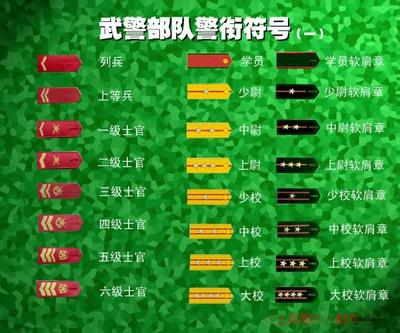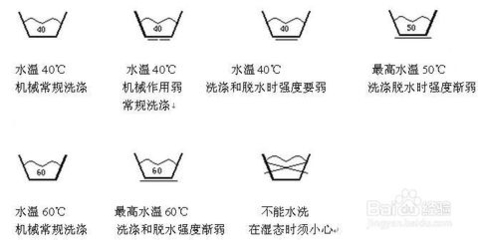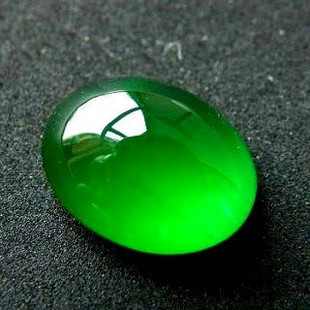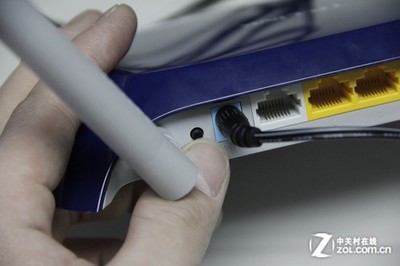Post-Activation Potentiation: Theory andApplication
Mon, 04/05/10 | BretContreras
http://www.elevatingfitness.com/article/post-activation-potentiation-theory-and-application-04062010
I’ve been enthralled by PAP ever since Iheard about legendary Canadian Sprinter Ben Johnson squatting 600lbs for 3 reps ten-minutes prior to his infamous 1988 Olympic9.79-second world-record performance in the 100-meter sprint.Although Ben’s gold medal was later stripped due to a positive testresult for performance enhancing substances (Stanozolol), anddespite the fact that Johnson’s coach Charlie Francis stated thatthe incident was fictitious and never actually occurred, the storystill peaked my interest. More stories involving PAP have surfacedfrom time to time in the Strength & Conditioning industry. Forinstance, researchers Gillich and Schmidtbliecher reported that a1995 bobsledding team used MVC’s prior to competition to elicit PAPand subsequently won the world championship. As a final example,strength coach Tony Gentilcore recently utilized PAP to leap ontothe stage at an Alicia Keys concert prior to his arrest.
The first time I recall learning about PAPwas when Charles Poliquin first started writing about it onT-Nation. Poliquin states that he first heard about PAP’sapplication to weight training (The 1-6 Principle) at a 1991 NSCAconvention in San Diego from U.S. Weightlifting coach DragomirCioroslan. However, Poliquin mentions that it was first discussedin strength training circles in the early 1980’s after Germanstrength physiologist Dietmar Schmidtbleicher’s work was translatedto English. Other sources state that Yuri Verhkoshansky firstintroduced PAP to around forty U.S. and Canadian strength coachesin the summer of 1986 at the Moscow Institute of Sport. Regardlessof where the principle originated, PAP has some very intriguingapplications to sport training.
In this article, I’m going to first shedsome light on PAP and then offer some suggestions as to how it canbe appropriately programmed into your training.
What is PAP? Is it Different from Complexor Contrast Training?
If you’ve been reading strength trainingliterature for a substantial period of time, then chances areyou’ve seen the acronyms PAP, PTF, PTP, and/or PAF. PAP stands forPost-Activation Potentiation. PTF stands for Post-TetanicFacilitation. You might seldom see PTP, which stands forPost-Tetanic Potentiation, and PAF, which stands forPost-Activation Facilitation.
How is PAP different from PTF? PAP involvesvoluntary contractions, such as a maximum isometric contraction ora set of heavy squats, while PTP involves involuntary contractions,such as those elicited by electric muscle stimulation (EMS).Obviously as a strength coach I’m more interested in PAP, as I’mnot yet interested in hooking my athletes up to electrodes andzapping them prior to their explosive exercises.
Sometimes individuals will use the terms“complex training” and “contrast training” in reference to PAP.Although strength coaches often have different opinions as to whatcomplex and contrast training entails, PAP indeed forms the basisfor both methods. Complex training involves combiningbiomechanically-similar traditional heavy strength training andplyometric/ballistic training methods in an attempt to transferstrength into power. Numerous studies and reviews including thoseby Ebben, Verkhoshansky and Tatyan, Adams et al., and Lyttle et al.indicate that complex training is equally or more effective thanstrength training alone or plyometric training alone in increasingexplosiveness.
In Neuromuscular Basis ofKinesiology Roger Enoka states that, “The magnitude of thetwitch force is variable and depends on the activation history ofthe muscle. A twitch elicited in a resting muscle does notrepresent the maximum twitch. Rather, twitch force is maximalfollowing a brief tetanus; this effect is known as posttetanicpotentiation of twitch force.” This means that an electricalstimulation of the muscles can lead to a subsequently more powerfulcontraction.
Here’s a simpler definition: PAP is aphenomena by which muscular performance characteristics are acutelyenhanced as a result of their contractile history. The underlyingprinciple surrounding PAP is that heavy loading prior to explosiveactivity induces a high degree of CNS stimulation which results ingreater motor unit recruitment lasting anywhere from five to thirtyminutes.
There are many different ways to utilizePAP. In the past, legendary strength coach Charles Poliquin hasrecommended using wave-loading to induce PAP, popular strengthcoach/author Christian Thibaudeau has recommended using maximalisometrics for PAP, and popular personal trainer/author ChadWaterbury has recommended using supramaximal holds as a method toelicit PAP.
While the science involving PAP is solidand makes perfect sense, prior research on PAP is equivocal. Therehave been plenty of studies showing that PAP works and plenty ofstudies showing that PAP doesn’t work. PAP research is most likelyinconclusive due to the large number of variables involved inimplementing PAP, which I’ll elaborate upon later in thearticle.
Arguments in Favor of UsingPAP
Here is a list of arguments that strengthcoaches may have in favor of using PAP:
1. Short-term enhancement – May increasedneuromuscular performance in actual competitive event throughPAP
2. Chronic adaptation – May increase training effect using PAP intraining which would result in increased Rate of Force Development(RFD)
3. Increased workout density – Combined training allows for moreactivity with less actual resting time which is critical if totalworkout time is limited
4. Increased dynamic transfer – By combining biomechanicallysimilar activities athletes may groove more efficient neuralpatterns by learning to perform the lift in a manner more specificto the athletic activity
5. Increased work capacity – By increasing workout density athleteswill increase their work capacity which is characterized by highlevels of average power output over an interval (which I call powerendurance)
Arguments Against Using PAP
Here is a list of arguments that strengthcoaches may have against using PAP:
1. There is not enough research supportingit’s use, we don’t have an adequate handle on all the variablesinvolved in PAP
2. Recent research shows that combined training can lead toinferior results due to inhibition of physiological pathways, itmay be wiser to train max strength and max speed/power in separatesessions
3. PAP is often impractical – depending on the protocol it mayrequire a precise amount of time or “window of opportunity,” it mayrequire equipment that is unavailable in a competitive or trainingsituation
4. A simple dynamic warm-up could enhance contractility of musclesequally or better than max contractions involved in PAP
5. Positive studies using PAP could be the result of increasedmuscle temperature or other characteristic of general warm-up
6. Testing to see if PAP works on an individual athlete or todetermine the optimal protocol for an individual can be tedious andif done incorrectly could lead to decrease in neuromuscularperformance or decreased training effect
7. Using PAP may fail to maximize strength and power by combiningthe two and training them in fatigued state
How Does PAP Work from a ScientificStandpoint?
There are three proposed mechanisms as tohow PAP works:
1. Phosphorylation of myosin regulatorylight chains – max contraction alters structure of myosin head andleads to increased sensitivity of myosin head to calcium ionsreleased by the sarcoplasmic reticulum
2. Increased recruitment of higher order motor units – maxcontraction activates adjacent motoneurons via afferent neuralvolley and H-Reflex enhancement which increasesneurotransmission
3. Change in pennation angle – max contraction decreases pennationangle which increases force transmission to the tendon
How Does PAP Work from a Non-ScientificStandpoint?
Yuri Verhoshansky has explained PAP asfollows:
When you perform a 3-5 RM followed by alight explosive set…to your nervous system it’s like ‘‘lifting a ½can of water when you think its full.”
Why Doesn’t PAP Always Work?
First, a max contraction will alwaysgenerate fatigue and PAP at the same time. Fatigue attenuates ordiminishes force-generating capabilities of the muscles while PAPpotentiates or enhances them. PAP and fatigue develop and dissipateat different rates. Fatigue subsides at a faster rate than PAP, sopotentiation of performance can be realized at some point duringrecovery period. The max contraction could enhance power andtraining effect via PAP, or it could induce fatigue. The balance ofPAP and fatigue determines the net effect on performance of thesubsequent explosive activity. Fatigue can be either central orperipheral. Isometric contractions lead to more central fatigue,but more peripheral PAP, whereas dynamic contractions lead to moreperipheral fatigue, but more central PAP.
Second, PAP may be more beneficial tosingle actions such as a max vertical or broad jump, a max throw orswing, or even a max isometric contraction rather than repetitivecyclical actions such as sprinting, cycling, orswimming.
Third, the parameters of the variablesinvolved in PAP may require tinkering and optimization. Forth, PAPmay not work for certain individuals.
I will expound upon the third and forthreasons later in this article.
What is the Ideal “Window” ofPAP?
The optimal recovery or “window” of PAPdepends on the decay-rate of PAP and the dissipation of fatigue.The coexistence of PAP and fatigue may result in a net-potentiatedstate, a net-attenuated state, or a constant state as compared tothe prestimulus state.
Some studies show increased powerimmediately following a max isometric or dynamic contraction. Aperformance improvement is indeed possible if initial peak PAPoverrides initial peak fatigue. PAP may initially rise abovebaseline, then dip down below baseline, and then rise abovebaseline again before returning to normal over a ten minute period.Windows are immediately after a low volume contraction or after aspecific recovery period for high volume contractions.
An excellent journal article titled“Factors Modulating Post-Activation Potentiation and its Effect onPerformance of Subsequent Explosive Activities” shows twotheoretical “ideal windows of opportunity” for PAP. These windowsillustrate periods where PAP exceeds fatigue and would thereforelead to a “potentiation” of performance. Following a low-volumemaximal contraction, you want to perform the explosive activityimmediately following the set. Following a high-volume maximalcontraction, you want to wait several minutes before performing theexplosive activity.
An example of a low-volume max contractionwould be a heavy single for squats. An example of a high-volume maxcontraction would be eight sets of five second isoholds separatedby 40 seconds of rest in between sets.
This graph does a good job of illustratingthe two windows of opportunity for PAP:
What Factors Influence the PAP-FatigueRelationship?
The PAP-fatigue relationship is affectedby
1. The volume of contraction (sets. reps,rest interval)
2. The intensity of contraction (it seems that maximum contractionsare optimal)
3. The type of contraction (dynamic or isometric)
4. Subject characteristics (strength, fiber-type distribution,training status, power-strength ration), and
5. The type of subsequent activity
The parameters for the training variablesinvolved in PAP have yet to be determined.
Does PAP work for everyone?
Research indicates that PAP is veryspecific to the individual. Some evidence shows that PAP worksbetter in stronger individuals than weaker individuals (Gourgouliset al., Kilduff et al.). Some research shows that PAP works betterfor more fast-twitched individuals in comparison to moreslow-twitched individuals (Hamada et al.). Evidence points towardsPAP being more effective in highly trained individuals (Chiu etal.). Some evidence shows that PAP works better for strongindividuals who aren’t very powerful; ie: they have troubleconverting their strength to power (Schneiker et al.). Finally,research indicates that not all individuals display increasedphosphorylation following a max contraction (Smith andFry).
Furthermore, different muscles may havedifferent rates of recovery in terms of fatigue and PAP. PAPappears to work better if the kinematics of the max contractionmatch the kinematics of the subsequent explosive activity. PAPappears to work best in activities involving type II fibers(Hamada, Sale, & MacDougall). Many PAP studies indicate a 2-10%improvement in performance, so this area indeed warrants furtherinvestigation.
Why Does the Author Believe in UtilizingPAP?
Most strength coaches around the countrylike to do explosive work before strength work, simply because theyfeel that power work should be done while the nervous system is“fresh.”
Regarding pure strength work, Poliquinutilized PAP for his 1,6 program. I’ve experimented with the 1,6program and didn’t find that it worked well for me, but perhaps Ifatigue easier than others, or perhaps there are other issues atplay. Eric Cressey mentioned in an article that he didn’t buy intoPAP in regards to schemes like the 1,6 program. I have apowerlifter-friend who swore by the 1,6 program. In this regard,PAP appears to work very well for some people and not-so-well forothers (which jives with the research I listed above).
As stated above, research indicates thatPAP works better for more experienced lifters, those with more fasttwitch muscle fibers, and especially for those who sit on the“static” end of the static-spring continuum (static being verystrong, spring being very elastic and explosive). Most gym-ratslike me are very “static” from years of heavy lifting.
I stumbled upon some recent research whichindicates that combined training involving speed work and heavylifting interfere with each other due to negations in adaptationsof respective physiological pathways. So for hypertrophy purposes,it may not be wise to incorporate explosive/speed activities alongwith heavy strength training or at least separateexplosive/speed/plyo training from heavy strength training byseveral hours. For more information on this topic visit thislink:
http://ajpregu.physiology.org/cgi/content/short/297/5/R1441
However, many individuals and athletes liketo go to the gym one time per day and do not wish to performmultiple training sessions per day. Some are limited by timeavailability and are unable to perform multiple daily trainingsessions. In this case, I believe that PAP is one’s best bet forpreserving or enhancing power while training heavy.
I believe that performing more than oneexplosive exercise first in the workout diminishes the capacity toperform maximum strength work. Conversely, I believe thatperforming more than one heavy strength exercise first in theworkout diminishes the capacity to perform maximum explosivestrength work. For example, if one were to perform a few hard setsof squats, deadlifts, and barbell glute bridges prior to verticaljumps and sprints, his jumping and sprinting power would suffer andthe athlete would feel like his feet were heavy and he was slowerthan normal. However, if one were to perform jump squats, powercleans, and sled pushes prior to heavy squatting, deadlifting, andhip thrusting, his strength would suffer and the lifter would feelthat he did not maximize the strength component to his workout.Alternating the two types of activities in the form of complextraining may therefore provide the perfect scenario.
Personally, I love hypertrophy, I lovestrength, and I love power…I want it all. I am not willing to gaina ton of muscle at the expense of becoming slow. If all one does ismedium-high rep hypertrophy training year in, year out, scienceindicates that that individual will become slower. This means slowpunches, slow sprint times, and a pathetic vertical jump. Byincorporating PAP at strategic times throughout the year, one canmaintain or build power and prevent power/speed losses over theyears. The best thing about incorporating PAP is that it doesn’taffect the training routine too much; it’s not very difficult toadd in a vertical jump right after a set of squats or a plyo pushup right after a set of bench press.
Even if research were to one day show thatPAP offers no for performance enhancing effects beyond that of adynamic warm-up I’d still be interested in incorporating PAP intoworkouts due to increased training density. Strength coaches MikeBoyle and Nick Tumminello have written extensively about utilizingactive recovery in the form of mobility, flexibility, andactivation drills in order to increase training density. Perhapscombining a strength movement, a biomechanically similar powermovement, and a non-interfering flexibility, mobility, oractivation movement serves as the ultimate method to maximizeworkout efficiency while minimizing total training time.
If you want to utilize PAP for short-termperformance boosting purposes it would be very wise to actuallytest the individual to see if it works. Don’t assume that PAP worksfor everyone or assume that the same PAP protocol is best for eachindividual!
What Would My Ideal Complex-TrainingScenario Look Like?
Here are some exercise pairs that I feelare worthy of experimentation:
Heavy Bench Press — Med Ball Throws,Shot-Put, Plyo Push Ups
Heavy Squats — Vertical Jumps, Jumping Lunges, RFESS Jumps, PowerSkips
Heavy Deadlifts, Good Mornings, Hip Thrusts, Barbell Glute Bridges,Reverse Hypers, Back Extensions — Sprints, Woodway SpeedboardSprints, Broad Jumps
Heavy Landmines, Woodchops, Pallof Press — Bat, Racquet, or GolfSwings, Discus Throw
Eccentric Ab Wheel Rollouts from Feet — Javelin Throw
Combining squats and jumps is a no-brainer.I really like the idea of combining hip thrusts and sprints off theWoodway speedboard as well. It’s not too often that you see any“core” movements utilized in PAP such as using ab wheel rollouts orwoodchops to load up the anterior chain prior to throwing orswinging activities but I would love to experiment to see if itcould lead to an enhancement of performance.
Some exercises are well-suited for 1RM’s orheavy singles. These exercises include squats, deadllifts, benchpress, and eccentric ab wheel rollouts. I believe that hip thrusts,glute bridges, good mornings, back extensions, reverse hypers,landmines, woodchops, and Pallof presses are better suited for repsof five.
I’d try to keep the reps for heavy strengthwork under or equal to five and I wouldn’t be afraid to prescribeheavy singles. For subsequent explosive work, I’d stick to fivereps or less as well and also wouldn’t be afraid to prescribesingle efforts. For example, a heavy squat single immediatelyfollowed by a max vertical jump might work very well.
I’m more interested in experimenting withlow-volume contractions with little to no rest time as opposed tohigh-volume contractions with longer rest times.
I wouldn’t quite “max out” or go to failureas I believe that grinding out a rep, exhibiting energy leaks, orpushing a set too far might lead to too much fatigue and preventPAP from occurring. I’ve studied the muscle activation involved inform decrements such as squats with a serious forward bend orround-back deadlifts and the result is always decreased muscularinvolvement in the prime movers which is something you want tosteer clear of in this instance. Furthermore, in studying muscleactivation the second repetition of a set usually always results inincreased muscle activation over the first rep, which is mostlikely due to the CNS “figuring out” the motor program. This playsa case for heavy doubles or triples for the max contraction used inPAP. In many instances one can maximize muscle activation by using95% of 1RM and using picture-perfect form. This is what you wantfor PAP purposes – maximum muscle activation in the intendedmusculature.
I’d use mostly bilateral lifts for the maxcontraction as unilateral lifts would take too much time to do bothlegs and interfere with the PAP window of opportunity. I’d usemostly bodyweight explosive movements for the subsequent explosivemovements or movements with actual sporting implements as opposedto speed-strength or strength-speed exercises such as jump squatsor power cleans. I’d try to mimic directional load vectors andjoint angles to maximize dynamic transfer. Two tools that I’d loveto experiment with in eliciting PAP are weight releasers and wholebody vibration platforms. I’ve heard Rob Panariello mention theformer methodology and Charlie Weingroff mention the lattermethodology.
 爱华网
爱华网



